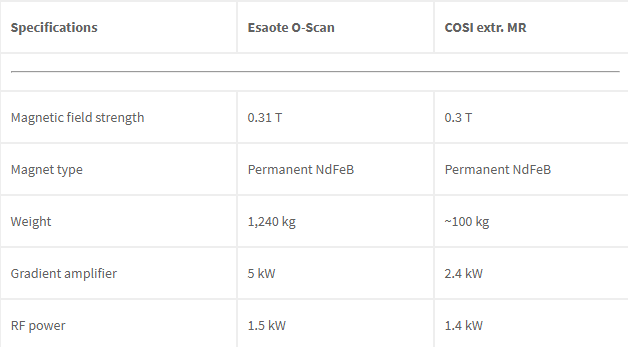In ‘On the Economic Value of Open Source Hardware – Case Study of an Open Source Magnetic Resonance Imaging Scanner,’ researchers Manuel Moritz, Tobias Redlich, Süleyman Günyar, Lukas Winter, and Jens P. Wulfsberg explore the possibilities of open source MRI scanning. As open-source technology takes its place around the world—everywhere from makerspaces to FabLabs, users on every level have access to design and innovation. In allowing such access to MRI scanning, the researchers realize the potential for ‘technological literacy’ globally—and with MRIs specifically, astronomical sums could be saved in healthcare costs.
The authors point out that medical technology is vital to the population of the world for treating not only conditions and illnesses, but also disabilities. As so many others deeply involved in the world of technology and 3D printing realize, with greater availability, accessibility, and affordability, huge strides can be made to improve and save lives. Today, with so many MRI patents expiring, the technology is open for commercialization.
“… the market is dominated by very few corporate suppliers with minimal variety of products; on a global scale, only few regions have sufficient access to MRI services; the total cost of ownership (TCO) for users is enormous including expensive lock-in service contracts for maintenance and training; and, finally, the technology is safe to use as it operates without ionizing radiation.”
Open-source MRIs would be beneficial in cost overall, but such ‘transparency’ would also mean easier maintenance of the technology, better servicing, and allowing access to anyone who is interested in studying and innovating in this area.
The Open Source Imaging Initiative (OSI2), begun in 2016, is made up of around 100 researchers experienced in MRI technology, along with other sciences. The members hail from over 50 different institutions around the US.
“The goal is to address existing challenges of reproducible research and make medical (MRI) devices more available, accessible, appropriate and affordable,” state the authors. “An open source policy facilitates these efforts. One ongoing project among many others is the development of a cost-effective open source imaging (COSI) MR scanner which follows a modular design, is scalable for different applications and is easily reproducible.”
A prototype is in development, but not yet online, although the researchers state that a similar design was uploaded to Thingiverse, receiving over 10,000 views and 1,600 downloads since 2014. For the open-source MRI, the researchers envision users being able to download and then buy parts and assemble scanners in the lab. They foresee ‘total cost of ownership’ at around $24,000 for ten years of use—obviously just a fraction of what it would normally cost. Doctors and hospitals could assemble and use MRI scanners with the assistance of ‘inhouse technicians.’
“Once the design is mature and freely accessible online, anyone can use and build on it,” concluded the researchers.
“Beyond reduced costs of the MR systems itself, additional benefits will arise with unrestricted access to knowledge and a global collaborative effort. Having in mind the broad range and enormous number of other open source hardware projects, one can easily imagine the magnitude of value being generated overall. To reach its full potential, however, public funding and investments by the public or private sector are necessary stage to support the democratization of technology.
3D printing and imaging software are often connected, especially regarding the medical realm as medical professionals can convert scans from CTs and MRIs to create 3D printed models, whether of brains, hearts, or even an eye. What do you think of this news? Let us know your thoughts! Join the discussion of this and other 3D printing topics at 3DPrintBoard.com.
[Source / Images: ‘On the Economic Value of Open Source Hardware – Case Study of an Open Source Magnetic Resonance Imaging Scanner’]
Subscribe to Our Email Newsletter
Stay up-to-date on all the latest news from the 3D printing industry and receive information and offers from third party vendors.
You May Also Like
Gorilla Sports GE’s First 3D Printed Titanium Cast
How do you help a gorilla with a broken arm? Sounds like the start of a bad joke a zookeeper might tell, but it’s an actual dilemma recently faced by...
Nylon 3D Printed Parts Made More Functional with Coatings & Colors
Parts 3D printed from polyamide (PA, Nylon) 12 using powder bed fusion (PBF) are a mainstay in the additive manufacturing (AM) industry. While post-finishing processes have improved the porosity of...
$25M to Back Sintavia’s Largest Expansion of Metal 3D Printing Capacity Since 2019
Sintavia, the digital manufacturing company specializing in mission-critical parts for strategic sectors, announced a $25 million investment to increase its production capacity, the largest expansion to its operations since 2019....
Velo3D Initiates Public Offering in a Bid to Strengthen Financial Foundations and Drive Future Growth
Velo3D (NYSE: VLD) has been among a number of publicly traded 3D printing firms that have attempted to weather the current macroeconomic climate. After posting a challenging financial report for 2023,...


































